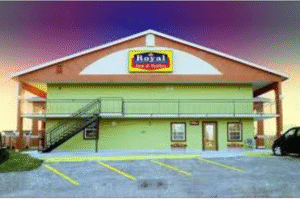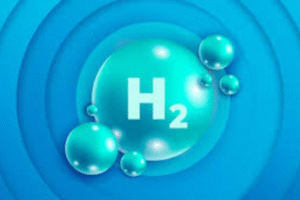Understanding the Reaction: HCOOH + CH₂ → H₂O – A Deep Dive into Organic Chemistry and Mechanisms
In the vast and intricate world of organic chemistry, the reactions involving simple compounds such as formic acid (HCOOH) and methylene (CH₂) can serve as powerful illustrations of fundamental chemical principles. One such reaction, often represented or questioned in academic settings, is:
HCOOH + CH₂ → H₂O
At first glance, this might appear as a simple reaction, but understanding what it means, whether it’s feasible, and what products are formed requires a comprehensive understanding of chemical structures, reaction mechanisms, and thermodynamics.
In this article, we will explore the depths of this reaction, including the identities of each component, the context in which such a reaction might occur, and whether the formation of water is chemically valid. We’ll also investigate potential reaction mechanisms and the relevance of such transformations in real-world chemistry.
Title Page Separator Site title
Slug
Meta descriptionUse AIInsert variable
SEO analysisEnter a focus keyphrase to calculate the SEO score
Premium SEO analysisPremiumAdd related keyphrasePremiumTrack SEO performanceInternal linking suggestionsPremium
Cornerstone content
Insights
Layout Settings (Layout settings will not work with custom templates, except for the default template.)
Move upMove downToggle panel: Layout Settings (Layout settings will not work with custom templates, except for the default template.)
| Layout |       |
|---|---|
| Right Sidebar | Primary Right Primary Left Front Sidebar 1 Front Sidebar 2 Footer 1 Footer 2 Footer 3 Footer 4 |
| Left SidebarThis sidebar option will work with only both sidebar layout (The last one) | Primary Left Primary Right Front Sidebar 1 Front Sidebar 2 Footer 1 Footer 2 Footer 3 Footer 4 |
Use up and down arrow keys to resize the meta box panel.
Title Page Separator Site title
Slug
Meta descriptionUse AIInsert variable
SEO analysisEnter a focus keyphrase to calculate the SEO score
Premium SEO analysisPremiumAdd related keyphrasePremiumTrack SEO performanceInternal linking suggestionsPremium
Cornerstone content
Insights
Layout Settings (Layout settings will not work with custom templates, except for the default template.)
Move upMove downToggle panel: Layout Settings (Layout settings will not work with custom templates, except for the default template.)
| Layout |       |
|---|---|
| Right Sidebar | Primary Right Primary Left Front Sidebar 1 Front Sidebar 2 Footer 1 Footer 2 Footer 3 Footer 4 |
| Left SidebarThis sidebar option will work with only both sidebar layout (The last one) | Primary Left Primary Right Front Sidebar 1 Front Sidebar 2 Footer 1 Footer 2 Footer 3 Footer 4 |
Use up and down arrow keys to resize the meta box panel.
Title Page Separator Site title
Slug
Meta descriptionUse AIInsert variable
SEO analysisEnter a focus keyphrase to calculate the SEO score
Premium SEO analysisPremiumAdd related keyphrasePremiumTrack SEO performanceInternal linking suggestionsPremium
Cornerstone content
Insights
Layout Settings (Layout settings will not work with custom templates, except for the default template.)
Move upMove downToggle panel: Layout Settings (Layout settings will not work with custom templates, except for the default template.)
| Layout |       |
|---|---|
| Right Sidebar | Primary Right Primary Left Front Sidebar 1 Front Sidebar 2 Footer 1 Footer 2 Footer 3 Footer 4 |
| Left SidebarThis sidebar option will work with only both sidebar layout (The last one) | Primary Left Primary Right Front Sidebar 1 Front Sidebar 2 Footer 1 Footer 2 Footer 3 Footer 4 |
Use up and down arrow keys to resize the meta box panel.
Table of Contents

- Introduction to the Reactants
- Structural Analysis
- Understanding Methylene (CH₂) – A Reactive Intermediate
- The Role of Formic Acid (HCOOH)
- Can HCOOH React with CH₂?
- Formation of Water in Organic Reactions
- Possible Reaction Mechanisms
- Thermodynamic and Kinetic Considerations
- Practical Applications and Industrial Relevance
- Related Reactions in Organic Chemistry
- Environmental and Biological Significance
- Summary and Conclusion
1. Introduction to the Reactants
First, let’s determine which species is causing the reaction.
- Formic acid, the most basic carboxylic acid, has the chemical formula HCOOH.
- CH₂: This could refer to a methylene carbene, a highly reactive intermediate.
- H₂O: Water, a common byproduct in many organic reactions.
2. Structural Analysis
Formic Acid (HCOOH)
Formic acid consists of:
- One carbon atom double bonded to an oxygen (carbonyl group)
- A hydroxyl group (-OH)
- A hydrogen atom
Structure:
O
||
H – C – OH
Methylene (CH₂)
This is an unusual species in standard chemistry. CH₂ is typically seen as:
- Two nonbonded electrons make up the neutral divalent carbon molecule known as methylene carbene (:CH₂).
Structure:
:CH₂
This methylene carbene is extremely reactive due to its incomplete octet and is generally found only as an intermediate.
3. Understanding Methylene (CH₂) – A Reactive Intermediate
In its singlet or triplet form, methylene is unstable when left alone.It can be generated through:
- Photochemical decomposition
- Thermolysis of diazomethane
- Organometallic pathways
Singlet methylene has paired electrons in one orbital, making it more electrophilic.
Triplet methylene exhibits diradical behavior due to its unpaired electrons.
Both are used in cyclopropanation and insertion reactions in organic synthesis.
4. The Role of Formic Acid (HCOOH)
Formic acid is:
- A weak acid
- An excellent hydrogen donor
- Used in dehydration, esterification, and reduction reactions
In both organic and industrial chemistry, it frequently takes part in redox or condensation reactions.
5. Can HCOOH React with CH₂?
Here’s where the complexity begins. Can formic acid react with methylene carbene to produce water?
The general concept is condensation or a dehydration reaction. However, this would depend on whether the CH₂ inserts into a bond or abstracts a hydrogen.
Hypothetical Pathways:
- CH₂ Insertion into O–H Bond: Highly unlikely but possible with a reactive carbene.
- Abstraction of OH and H from Formic Acid to Form Water: Requires a highly energetic and improbable intermediate.
Thus, while plausible in advanced synthetic setups or theoretical reactions, this transformation is not typical under normal conditions.
6. Formation of Water in Organic Reactions
Water is a common byproduct in:
- Condensation reactions
- Esterification
- Dehydration of alcohols
- Amide formation
In our case, for H₂O to form, there needs to be a loss of H⁺ and OH⁻ from the molecules, typically catalyzed by acid or base.
7. Possible Reaction Mechanisms
1. Carbene Insertion
Methylene (:CH₂) might insert into:
- C–H bonds
- O–H bonds
- Double bonds
Formic acid’s O–H bond is slightly acidic and could be a target.
Mechanism Hypothesis:
- Methylene carbene enters formic acid’s O-H.
- Intermediate forms a CH₂-O-H species.
- Rearrangement or elimination produces water.
But these steps are not standard and may be more relevant in gas-phase or plasma chemistry than in solution.
8. Thermodynamic and Kinetic Considerations
This reaction would likely be:
- Endothermic without catalysts
- Fast if CH₂ is generated in situ
- Difficult to control due to carbene instability
Temperature, solvent, and method of CH₂ generation drastically affect the feasibility.
9. Practical Applications and Industrial Relevance
While this reaction isn’t common in textbooks, related transformations have applications in:
- Fuel chemistry (formic acid as hydrogen source)
- Green chemistry (low-carbon transformations)
- Pharmaceutical intermediates (carbene insertions)
However, direct usage of CH₂ in industry is limited due to its dangerous reactivity.
10. Related Reactions in Organic Chemistry
Several known reactions parallel this transformation:
a. Wolff Rearrangement
Involves carbene intermediates from α-diazoketones.
b. Cyclopropanation
Methylene carbenes react with alkenes to form cyclopropanes.
c. Dehydration Reactions
Using acids or heat to remove water.
None, however, follow the exact stoichiometry of HCOOH + CH₂ → H₂O, reinforcing that this is likely a theoretical or niche academic example.
11. Environmental and Biological Significance
Formic Acid in Nature:
- Present in ant venom
- Used by bacteria in metabolic processes
CH₂ in Atmospheric Chemistry:
- Appears briefly during combustion
- Can influence radical reactions and ozone formation
Water, the proposed product, is naturally produced in:

- Respiration
- Oxidation reactions
- Organic decomposition
Thus, the idea of small molecules transforming into water is consistent with broader natural chemical cycles, though not through this direct pathway.
12. Summary and Conclusion
The expression HCOOH + CH₂ → H₂O is not a well-known or standard reaction in organic chemistry, but exploring its components provides valuable insights:
- A straightforward and adaptable carboxylic acid is formic acid (HCOOH).
- Methylene (CH₂) is a fleeting, highly reactive carbene, not stable under normal conditions.
- Water formation may be theoretically possible, but it would require extreme conditions or advanced setups.
While the reaction is likely hypothetical or academic, studying such formulations enriches our understanding of reaction pathways, carbene chemistry, and organic transformation mechanisms.
So, the next time you encounter a curious reaction like this, remember: chemistry is not just about what is known—it’s also about exploring what could be possible.
Dive deeper into the lives of Hollywood’s elite on Guestdraz.com.














Post Comment